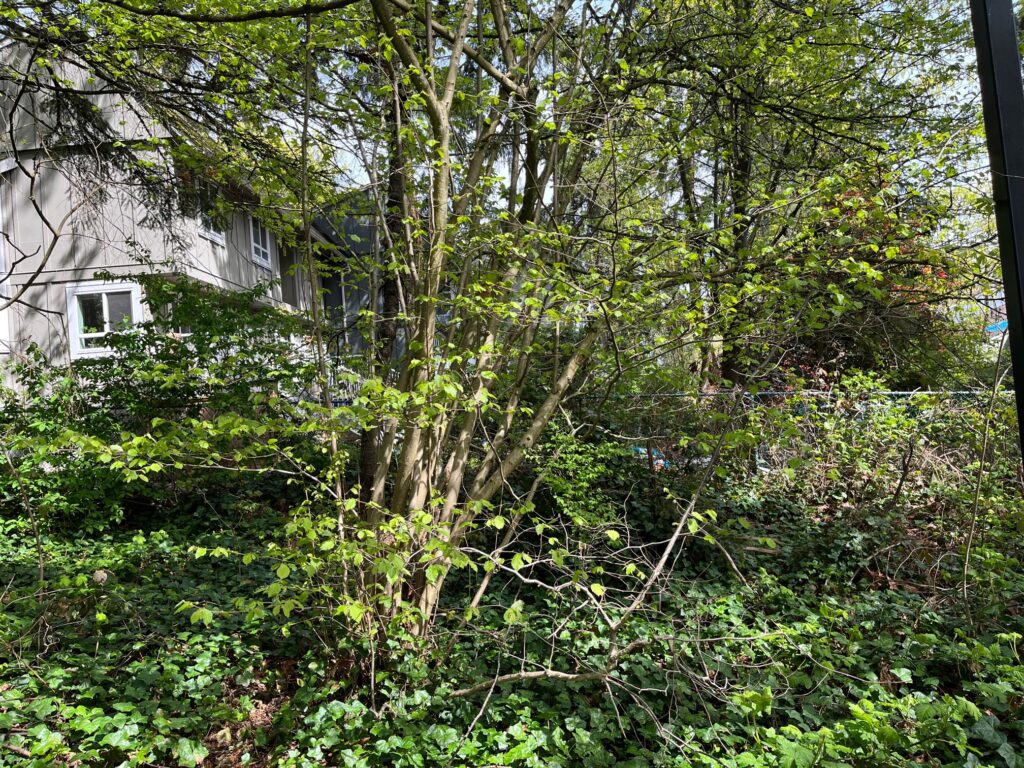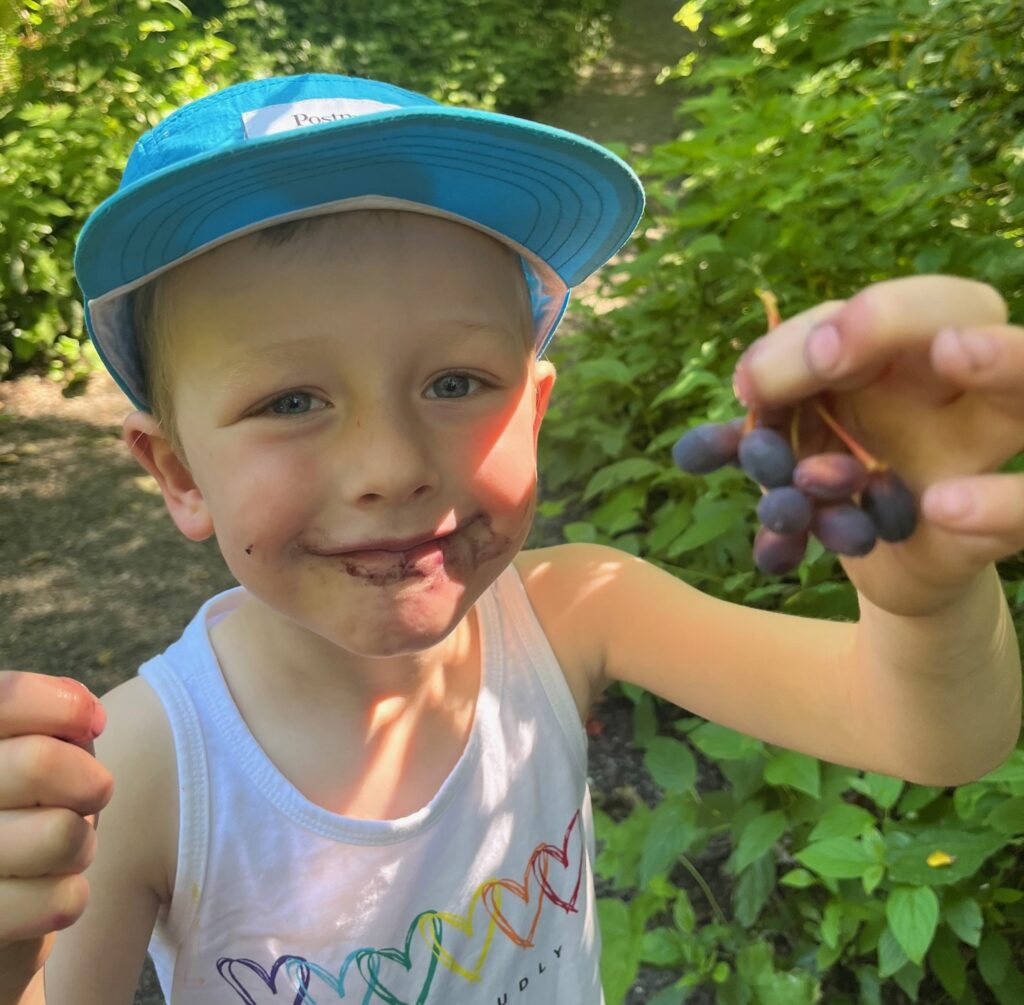Tonight on June 8, 2023, we hosted a Native Plant Event on Zoom. 7 participants attended to learn about native plants for our future Native Food Forest project on the Champlain Heights trail. Free the Fern President, Grace Nombrado, led the PowerPoint presentation (see a PDF of the presentation at the bottom of this blog).
Grace began by sharing about the history of native food gardens. There is a historical precedence for forest gardens, as the Ts’msyen and Coast Salish peoples created them along the north and south pacific coast. As shared by Squamish educator, Matthew Williams, in our recent Native Plant Walk, indigenous people would begin by burning an area of coniferous forest close to a village site. Then, they would plant a mixture of fruit & nut trees, shrubs and groundcover. These plants would provide food and medicine for the people. A 2021 SFU study found that Indigenous Forest Gardens actually improve the ecosystem of an area, as they contain more biologically diverse species & habitat for animals & pollinators.

Grace then presented about native fruit & nut trees of the Pacific coast. These include the beaked hazelnut, our only nut bearing tree, that produces nuts that can be eaten raw. The beaked hazelnut tree is also the first flowering native tree, producing yellow drooping clusters of flowers as early as January. Secondly, is the native crab apple tree. The crab apple tree produces edible, tart 2 cm-sized apples that ripen in September-October. Finally, there is the bitter cherry. Like its name implies, this tree produces bitter-tasting cherries. However, the bark can be peeled to make baskets.

Grace then presented about native shrubs, including: Indigenous plum, red flowering currant, saskatoon berry, elderberry, and thimbleberry. Indigenous plum, also called osoberry (after the Spanish word “oso” meaning bear, as Spanish explorers noticed that bears love eating the fruit of this shrub), is the first flowering shrub of the season. It produces drooping white flowers in March, that ripen into purple edible plums in June. The red flowering currant blooms soon after the plum, in April. It produces bright red clusters of drooping flowers that attract hummingbirds. The fruit of the red flowering currant is also delicious and sweet and ripens at the end of summer. Saskatoon berry or serviceberry is interesting because of its name. Saskatoon means “fruit of the tree with many branches” in Cree, while serviceberry refers to the flowers blooming as a signal as the ground being thawed and it being time for Priests to resume service for funerals. Saskatoon berries look much like little apples, and they are actually closely related to the apple, and ripen after they are picked. Elderberry, which comes in two varieties – blue elderberry and red elderberry – must be eaten with caution. As the seeds contain a cyanide-inducing glycoside, so will cause vomiting if eaten. In addition, the fruit must be cooked before consuming. However the flowers have medicinal purpose, as they can be used to make syrup that aids with coughs and colds. Finally, the thimbleberry is a local berry that resembles the shape of a thimble. The sweet red berries are going to be ripening soon in July, and they can be eaten fresh or collected and dried. The large fuzzy leaves can also be used as “natures toilet paper” if you are in the forest.

Grace finished her presentation with native groundcover, including: strawberry, redwood sorrel, kinnikinnick, wild ginger, and nodding onion. To learn more about what she shared, you can check out her PowerPoint presentation here: